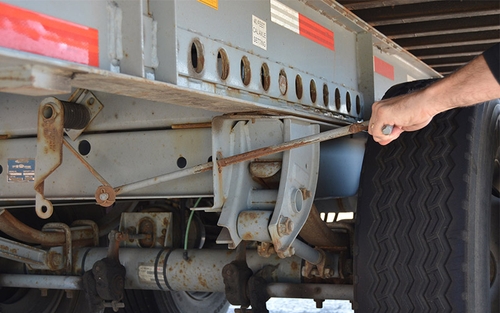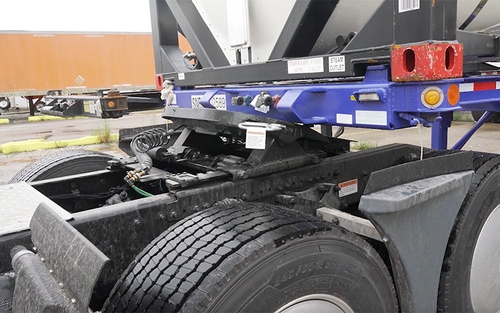Estimated reading time: 2 minutes
If you're a new truck driver, chances are you may have heard about Department of Transportation (DOT) inspections. But what exactly are they, and why are they important?
Below, we'll break down everything you need to know about DOT inspections, including the different levels of inspections and what you can expect during each one.
What is a DOT inspection?
A DOT inspection is an examination of a commercial motor vehicle (CMV) to ensure it complies with federal safety regulations. These inspections are done by certified inspectors, such as state troopers. They typically occur when a truck driver goes through a weigh station or is pulled over on the side of the road.
The aim of DOT inspections is to ensure CMVs follow guidelines set by the Federal Motor Carrier Safety Administration (FMCSA), minimizing risks and enhancing road safety. A certified inspector will check everything from the vehicle's condition to the driver's qualifications and time logs.
What are the DOT inspection levels?
There are eight levels of DOT inspections, with the first six being most relevant to truck drivers. Each level has its own specific focus and procedures, so understanding the differences will help you know what to expect and how to prepare:
Level one
Level one inspections, called “North American Standard Inspections,” are the most comprehensive level of inspection, since the vehicle and driver are both assessed.
In the inspection, drivers have to provide documentation (CDL, time logs, etc.) and get evaluated for alcohol and drug use.
Then, the inspector will conduct a 37-step examination of the vehicle. Some of the focuses of the inspection are:
- Brake systems.
- Cargo securement.
- Coupling devices.
- Driveline and driveshaft components.
- Driver’s seat.
- Exhaust systems.
- Frames.
- Fuel systems.
- Lighting devices.
- Steering mechanisms.
- Suspensions.
- Tires.
- Van and open-top trailer bodies.
- Wheels, rims and hubs.
- Windshield wipers.
Level two
Level two inspections, called “walk-arounds,” are nearly the same as level one inspections. The only difference is that the inspector does not go under the vehicle, which means the suspension and frame are not included in the inspection.
Level three
Level three inspections assess only a driver’s records and credentials. Besides being checked for seat belt and alcohol and drug usage, drivers must provide their:
- CDL.
- Medical Examiner’s Certificate.
- Skill Performance Evaluation (SPE) Certificate.
- Hours of Service (HOS) logs.
- Record of Duty Status (RODS).
- Carrier identification and status.
Level four
Level four inspections focus only on a specific aspect of the vehicle, chosen annually by the DOT. This type of examination is typically used to keep an eye on common violations and trends.
Level five
Level five inspections assess only the vehicle. This type of inspection is most common at weigh stations following an accident or arrest.
Level six
Level six inspections are for vehicles carrying radioactive materials. This level contains all the elements of a level one inspection but with an extra focus on radiological checking.
What happens during a DOT inspection?
During a DOT inspection, officials follow a standard procedure that involves:
- Interviewing the driver.
- Verifying the driver’s documents.
- Inspecting the vehicle.
Once the inspection is complete, the inspector will provide the driver with a report that details any violations or issues found during the inspection.
Violations during a DOT inspection can range from minor to severe. Some common violations include, but are not limited to:
Driver-related violations:
- Invalid or expired CDL.
- Invalid or expired medical card.
- Log book violations.
Vehicle-related violations:
Violations can affect a driver’s CSA score and potentially lead to fines or out-of-service orders.






